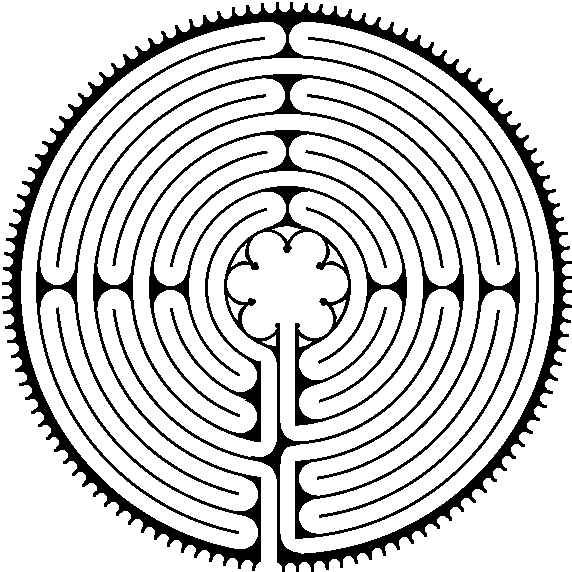There is a metaphor for the religious life that has been gaining ground for years now. In fact, it is an ancient metaphor. But you hear a lot about it nowadays. We speak of the religious life as a journey. We are on a faith journey. This may come from the pilgrimages that people made long before the Reformation and continue to made today in many parts of the world. There is also the pilgrimage as pageant. We see this in Spenser’s Fairie Queene and in Bunyan’s Pilgrim’s Progress. A person on a spiritual quest passes through trials, reaching a new stage on the way to … whatever. God. A holy life. Enlightenment. One such practice that has long been popular is the labyrinth. Here the pattern of a famous labyrinth at Chartres:

The labyrinth is a thoroughly modern metaphor. Note: whenever I use the word “modern,” feel free to translate that as: “anything before 1914.”
The purpose of a metaphor is, I believe, to assist in communicating ideas. However, the metaphor seems to acquire a life all its own. For example, Sicilians are famous for the expression: “God is a pig.” In fact, Sicilians may not be using this in a metaphorical sense, but rather, as a ritual utterance, a formulaic expression whenever something occurs which seems both tragic and without reason. But this expression might mean something completely different to a (non-Sicilian) police officer. It might mean that God is like a cop, an enforcer of divine rules. This only shows that if you stretch a metaphor too far, it will break.
A journey through a labyrinth. With the passage of time, and with the accretion of new experience, this understanding of faith may have gathered unexpected meanings—like moss on a rock (sorry, that’s a simile). Labyrinths have endings. They have solutions. Also, they are stationary: we move through the labyrinth, but its structure remains the same and never responds to our presence within it.
Maybe the model has to be reinterpreted for the postmodern mind. My son has a virtual reality screensaver—a 3D run through a labyrinth. Unlike the path laid out in stone at Chartres, this labyrinth changes with each twist and turn, and it never ends. There is no solution. Maybe that more accurately describes the way we, in the 21st century, encounter the spiritual in our world. But like all models, this, too, is inherently limited.
Another model I like to use to describe my apprehension of the divine is the conversation. The conversation never demands closure. Sometimes, after years apart, old friends can pick up a conversation and continue talking as if it was later on the same day they first spoke together. And conversations have no fixed ground. I may say my piece, and then my friend responds in ways that I can never predict. And so I mull over my friend’s words, and they inspire new thoughts which lead me in unexpected directions. The beauty of such a conversation is that it is filled with forgiveness. Nothing I say is intended (nor is it received) to fix me to a determinate position. Perhaps, in light of what my friend offers, I will change my mind, or reserve judgment, or return to the same topic on another day. And my friend requires nothing of me for a certainty. Such are conversations of love. They are intimate and fleeting. And they allow us the freedom to become.
The only thing which is a transgression in these conversations is that an idea become forever tacked to a metaphor.